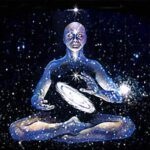When Fruit of ‘I am Brahman’ is Denied (viparīta-bhāvanā)

A common question by a person with Self-Knowledge: “Having done shravanam and manana, it's clear I am Brahman. But in my behavior I do not find myself, ‘I am Brahman'. Why?“
Answer:
You may have to deal with another problem – that of “viparīta-bhāvanā (viparita-bhavana)“.
It's caused by your memories.
There is another parallel reality – the Emotional reality.
This emotional reality is the reality of the child.
In everybody there is a child. And the child is in form of the Unconscious (samskara/vasana).
The Unconscious does not know (nor care), that person can genuinely claim with absolute understanding and clarity, “aham brahmasmi“.
Meaning, even though the person has come to discover, “I am Brahman” – sometimes his/her Unconscious can interfere in the appreciation of this Self-Knowledge.
It will not let you enjoy the fruits of this “aham brahmāsmi” understanding entirely. Because Unconscious is still waiting for attention.
This phenomena is called: “viparīta-bhāvanā“.
The solution thus is:
A persistent sadhana of Nididhyasanam. Meaning you continue contemplating upon what you have understood.
Yes, self-inquiry likely continues until last breath. Except now it's not for sake of “Who am I?“, but for sake of resolving Obstacles which deny one from enjoyment of knowledge of Limitlessness/Freedom.
Because some Unconscious samskaras are deeply ingrained, mainly due to Childhood issues.
For example, by age 5-6, dominant life views have already been deeply etched in child's Brain. And this can interfere with qualities like Compassion, humor, friendliness and overall cheerfulness.
Nididhyāsana isn't necessary though for a wise person. Because they know all problems (including the Unconscious) belongs to Mityha (dependent reality).
But ironically wise person has nothing to either lose nor gain by attending to the present saṃskāras/vāsanās. So in most cases he/she gladly continues the journey of growth and purification.
Only difference is, the growth/purification is expressed out of Love. And not of fear/desire or sense of lack.
So nothing really changes.
This is why Self-realized devotees continue listening to Vedanta sessions and reading Śruti (scriptures). Because it's a sādhana of Nididhyāsana.






Hi Andre, I have a question that I’m trying to resolve at the moment.
I have zero doubt that I am Atman, the self evident “I”, and that I’m not the body/mind/intellect, etc. However, I’m still trying to understand how this Atman that I am, is the exact same Atman as another person, or all living beings for that matter. Because even though I understand that I am Consciousness, I am still having trouble breaking the illusion of duality, and need to understand how the Consciousness that I am, is the same Consciousness everywhere.
I understand that the world we see of names and forms is ultimately mithya, so my body and someone else’s body is mithya, right? Subject to modification, meaning it’s always changing, therefore everything we see in the world/universe is none other than Isvara, am I correct? I think I understand that so far. I just need to reconcile all of that in my mind to bring it back full circle to understand how it all connects, and then be able to truly understand that everything is Brahman, including myself. How is Brahman manifest as everything and everywhere? Because I am Awareness, but I am only aware of my immediate surroundings, while someone on the other side of the world is also Awareness, but they are only aware of their own surroundings. How is Brahman seemingly two, yet actually one?
Do you have any advice or suggestions or pointers to help me resolve this current doubt? Thank you and Namaste.
===
“Because even though I understand that I am Consciousness, I am still having trouble breaking the illusion of duality, and need to understand how the Consciousness that I am, is the same Consciousness everywhere.”
===
Suppose 3 people are pots. Luis is pot A. Neighbor is pot B. Jñāni is pot C. (Jñāni means liberated person with zero doubts).
The ONE SAME space inside and outside all 3 pots, is compared to ONE SAME consciousness.
For fun, we’ll put a human brain inside each pot. 🙂
3 pots then start speaking about each other. “You’re fat!”, “You’re smart”, “I’m tired”, “I’m confused”, “I’m happy”, “You’re unlucky!”, “I’m liberated”, “I’m ignorant”, etc.
All these statements made, reflect either the conditions of pot-body OR the pot-mind.
Now go back to beginning of this inquiry. What did we say? The ONE SAME SPACE (Consciousness) is inside all 3 pots.
And what is the nature of Consciousness? It’s nature is to illumine conditions, like: “You’re fat!”, “You’re smart”, “I’m tired”, “I’m confused”, “I’m happy”, “You’re unlucky!”, etc.
Meaning, whether you’re pot C or pot A, the fact that EACH pot can talk about each other’s attributes, means they are all pervaded by the one SAME consciousness.
========
therefore everything we see in the world/universe is none other than Isvara, am I correct?
========
Careful. Look at the order of the statement. Should be reversed.
Reflect on this VERY subtle, yet crucial difference:
Incorrect understanding: Everything is Īśvara.
Correct understanding: Īśvara is everything.
What is this tendency to put “everything” before Īśvara? When you can only make that statement because of Īśvara.
=======
How is Brahman manifest as everything and everywhere?
=======
Suppose you’re dreaming. You’re looking around at a vast world of laws and orders. You’re eating. Doubting. Going on planes. Talking about Brahman. Experiencing emotions.
You even see attractive opposite sex. You then get married. You then make dream children.
Your dream body eventually dies.
Suddenly you wake up!
You realize: The entire world of MANY, were all made up of the ONE waker.
In the same way, this waking state (which is ALSO a dream; except more stable thus appears more real), is resolved in Brahman.
What makes world of difference? Māyā’s āvaraṇa & vikṣepa śakti.
More about process of creation in Panchadasi recordings.
Thank you Andre, I think its much clearer now. I shall continue studying and inquiring! 🙂